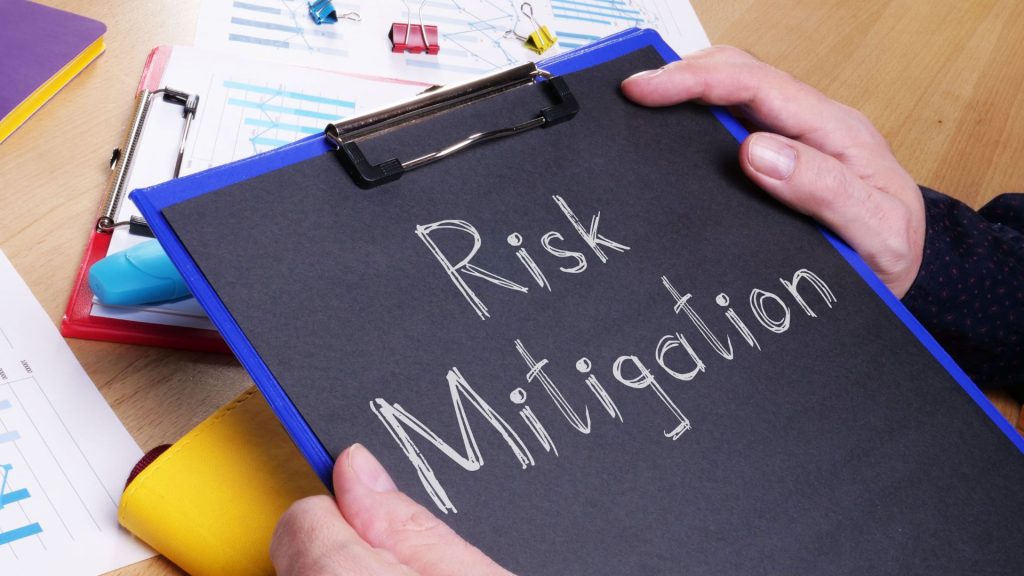AML (Anti-Money Laundering) and CTF (Counter-Terrorist Financing) risk mitigation are crucial processes for businesses and financial institutions to prevent illegal activities such as money laundering, terrorist financing, and other financial crimes.
Risks identified in different processes and departments must be mitigated by identifying and applying relevant internal controls.
AML/CTF Risk Mitigation Importance
Management needs to develop appropriate risk mitigation strategies and action plans to minimize or avoid the potential effects of the identified risks. Enterprise Risk Management, or ERM, is an integrated risk management process. Therefore, risk mitigation techniques must be cross-departmental and cover end-to-end processes. Risk mitigation is an ongoing process depending on the risk landscape and existing and emerging risks.
Management needs to identify the level of risks that is acceptable and beyond which the tolerance level is zero. Risk mitigation may require establishing separate units to timely identify and manage the risks or the risk management culture may be embedded in the processes of each department, where the departmental head also plays the role of risk manager for his relevant risks.
Management should identify and mitigate the effect of bias in carrying out risk assessment practices. For example, confidence bias may support a pre-existing perception of a known risk. How risk is framed can also affect how risks are interpreted and assessed.
For example, there may be a range of potential impacts for a given risk, each with a separate likelihood. Thus, a risk with a low likelihood but high impact could have the same outcome as a high likelihood, low impact; however, one risk may be acceptable to the organization while the other is not. As such, how the risk is presented and framed to management is critical to mitigating bias.
Bias may result in the severity of a risk being under or overestimated and limit how effective the selected risk response will be. Underestimating the severity may result in an inadequate response, exposing the entity and potentially outside the entity’s risk appetite. Overestimating the severity of risk may result in resources being unnecessarily deployed in response, creating inefficiencies in the entity. Additionally, it may hamper the entity’s performance or affect its ability to identify new opportunities.
Organizations will continue to face a future of volatility, complexity, and ambiguity. Enterprise risk management will be an important part of how an organization manages and prospers through these times. Regardless of the type and size of an entity, strategies need to stay true to their mission. All entities must exhibit traits that drive an effective response to change, including agile decision-making, the ability to respond cohesively, and the adaptive capacity to pivot and reposition while maintaining high levels of trust among stakeholders.
Risk Prioritization and Establishing the Criteria
The organization prioritizes risks as a basis for selecting responses to risks. Organizations prioritize risks to inform decision-making on risk responses and optimize the allocation of resources. Given the resources available to an entity, management must evaluate the trade-offs between allocating resources to mitigate one risk compared to another. Prioritizing risks, given their severity, the importance of the corresponding business objective, and the entity’s risk appetite helps management in its decision-making.
Priorities are determined by applying agreed-upon criteria. Examples of these criteria include the following:
Adaptability: The capacity of an entity to adapt and respond to risks, such as changing demographics like the age of the population and the impact on business objectives relating to product innovation.
Complexity: The scope and nature of a risk to the entity’s success. The interdependency of risks will typically increase their complexity, such as risks of product obsolescence and low sales, to a company’s objective of being the market leader in technology and customer satisfaction.
Velocity: The speed at which a risk impacts an entity. The velocity may move the entity away from the acceptable variation in performance, such as the risk of disruptions due to strikes by port and customs officers affecting the objective of efficient supply chain management.
Persistence: How long a risk impacts an entity, such as the persistence of adverse media coverage and impact on sales objectives after identifying potential brake failures and subsequent global car recalls.
Recovery: The capacity of an entity to return to tolerance, such as continuing to function after a severe flood or another natural disaster.
Recovery excludes the time to return to tolerance, which is considered part of persistence, not recovery. Prioritization takes into account the severity of the risk compared to risk appetite. Greater priority may be given to those risks likely to approach or exceed risk appetite.
Risks with similar assessments of severity may be prioritized differently. That is, two risks may both be assessed as a medium. Still, management may give one more priority because it has greater velocity and persistence or because the risk response for one risk provides a higher risk-adjusted return than for other risks of similar severity. How risk is prioritized typically informs the risk responses that management considers. The most effective responses address severity, such as the impact and likelihood, as well as the prioritization of risk, such as velocity and complexity.
Final Thoughts
AML and CTF risk mitigation are important because they help businesses and financial institutions comply with regulatory requirements and international standards for preventing financial crimes. By identifying and preventing suspicious financial activities, AML and CTF programs help to protect the integrity of the financial system and reduce the risks associated with financial crimes.
Failure to comply with AML and CTF regulations can result in significant legal and reputational consequences for businesses and financial institutions, including fines, penalties, loss of business, and damage to reputation.
Therefore, it is essential for businesses and financial institutions to implement effective AML and CTF risk mitigation strategies, including customer due diligence, transaction monitoring, suspicious activity reporting, and ongoing risk assessment. By doing so, they can help to ensure compliance with regulations, protect their customers and stakeholders, and contribute to the overall stability of the financial system.




